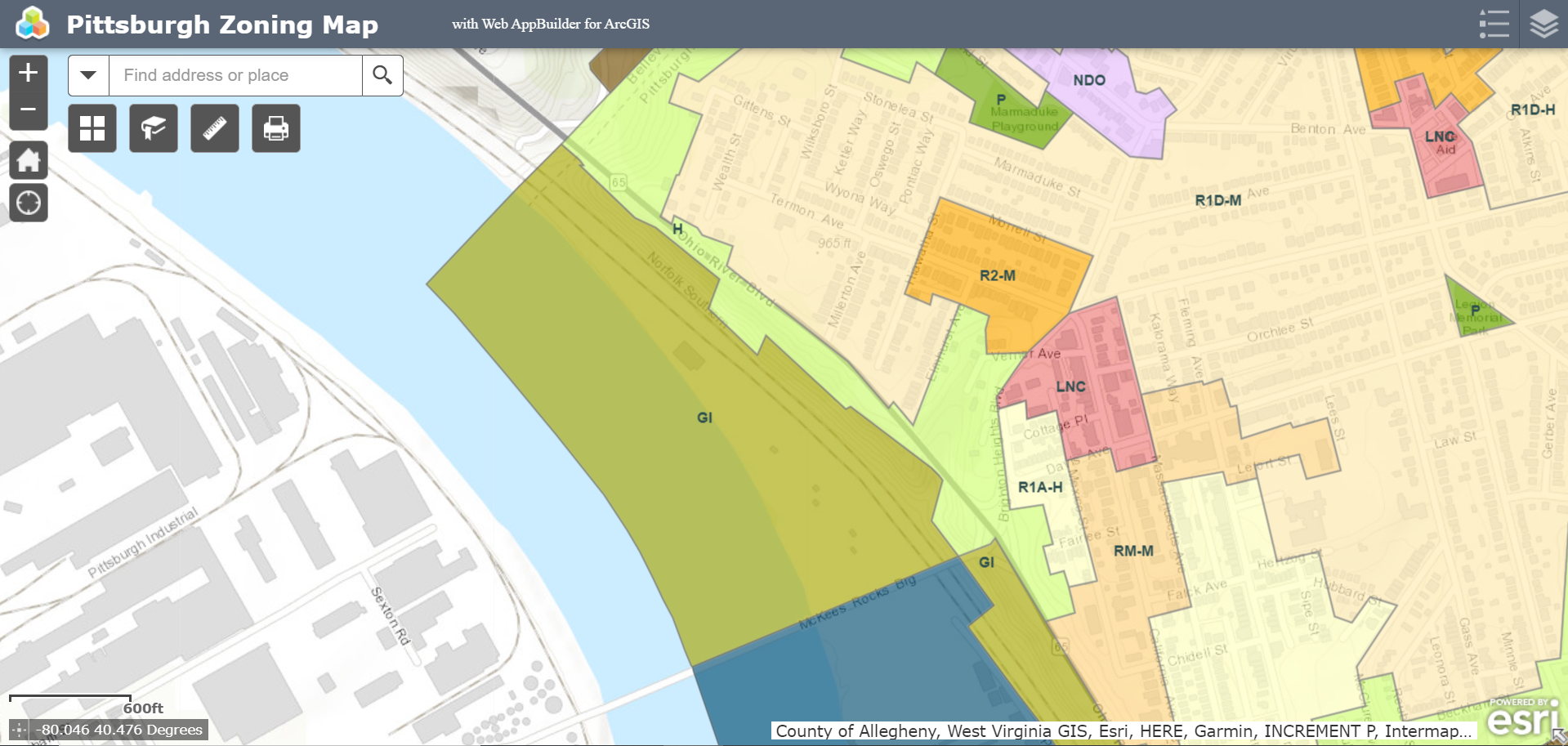Pittsburgh Zoning Districts - GI Overview
By Carolyn Ristau
Introduction
Zoning districts are a fundamental building block of zoning regulations and set the base use, height, and density standards. In some cases, the district also sets the required level of zoning review. The GI (General Industrial) zoning district covers 0.68 square miles or 1.4% of Pittsburgh. In this post, we provide an overview of the challenges when working on a site in the GI zone. Additional posts will dive into the uses and density regulations for the GI.
Refer to our Introduction to Pittsburgh’s Zoning Districts for the complete list of base zoning districts in the city. Pittsburgh’s interactive zoning map can be used to verify the project site’s zoning district.
Challenges
Projects in mixed-use zoning districts tend to have more standards to follow and are often required to go through Site Plan Review. Site Plan Review is a longer, more thorough review than Basic Zoning Review (formerly known as over-the-counter), and often requires additional documentation. Due to the staff time involved, there is an additional cost for the review. In the GI, Site Plan Review is required for:
any new construction, addition, or exterior renovation on a property with a lot size of at least 8,000 sq ft
any scope of work on most parcels adjacent to or within 100 feet of an R1D/A, R2, R3, RM, or H zoning district
One of the additional standards checked during Site Plan Review is Residential Compatibility. Residential Compatibility applies when a parcel is adjacent to or within 100 feet of an R1D/A, R2, R3, RM, or H zoning district. The Residential Compatibility Standards (Chapter 916) may add setbacks, height limits, and screening requirements above and beyond the base requirements. They may also impose limits on operating hours, lighting, noise, and odor. The zoning code acknowledges that this often creates a hardship. As a result, the code has standards to waive some or all of the Residential Compatibility Standards through a Special Exception at the Zoning Board of Adjustment.
Large parking lots (which means lots with at least 11 spaces) are subject to the Landscaping and Screening Standards (Chapter 918). These standards require at least 25 sq ft of landscaping per parking space and one tree for every five parking spaces.
Parts of the GI fall within the boundaries of the floodplain along the rivers and runs. If that is the case, floodplain regulations (Section 906.02) must be met before zoning can be approved. The interactive zoning map can help identify if all or a portion of the project site is within the boundaries of the floodplain.
Conclusion
The zoning district sets the base use, height, and density standards for any project and may also designate the level of review required. Projects needing zoning review in the General Industrial zoning district may require the longer and more expensive Site Plan Review process. They may also be subject to Floodplain, Landscaping and Screening, and Residential Compatibility standards.

